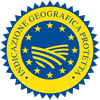Description
Canard à Foie Gras du Sud-Ouest PGI (Chalosse, Gascogne, Gers, Landes, Périgord, Quercy) The Canard à Foie Gras du Sud-Ouest PGI is the denomination that safeguards the ducks bred in particular areas of the southwest of France and the traditional products that derive from it, such as the confit, the foie gras, and the magret. Canard à Foie Gras du Sud-Ouest products are obtained from ducks from Barbarie and Mulard breeds.
Production Area
The production area of Canard à Foie Gras du Sud-Ouest PGI covers the municipal areas of the regions of Aquitaine, Midi-Pyrenees, Limousin and the department of Aude in the Languedoc-Roussillon region.
Production Method
The ducks have to be bred in farms located in the defined areas and transformed therein. The Canard à Foie Gras du Sud-Ouest PGI production requires the force-feeding of ducks during the pre-slaughtering period. The only cereal used for force-feeding is maize harvested in the geographical area of South-West France. There can be two types of products: uncooked or confits. Uncooked products are: foie gras-based preparations which must be made from raw fatted livers and smoked, dried and/or salted magret which must be made from raw magrets. The confits are taken to mean preparations obtained by cooking, in duckfat only, dry-salted cuts of foie gras duck meat.
Appearance and Flavour
The Canard à Foie Gras du Sud-Ouest PGI has a rosy colour, a soft and spreadable texture, a taste that is delicate, not bitter, but aromatic.
History
The Canard à Foie Gras du Sud-Ouest PGI is the result of an old duck breeding tradition and the foie gras production in the southwest of France thanks to maize-growing. The poultry-fattening properties were praised by Parmentier in a thesis he presented on 25 August 1784: the quality of the duck livers that are so renowned throughout Europe is fully attributable to this maize. So Canard à Foie Gras du Sud-Ouest PGI appeared again in the 17th century, spreading out in the southwest of France and in Alsace.
Gastronomy
The Canard à Foie Gras du Sud-Ouest PGI can be eaten warm, fried or roasted, in some cases wood-smoked. If cooked, it can be spread on bread canapés with butter, on fillet steaks, flavoured with truffle and Armagnac. For enjoying it better one should remember to take it out of the refrigerator 15 minutes before tasting. The Paté de Foie Gras du Sud-Ouest PGI is a tasty aperitif which goes well with white wines like Sauternes.
Marketing
The product is sold as Canard à foie gras du Sud-Ouest PGI. Besides the label can include also the name Chalosse, Gascogne, Gers, Landes, Périgord, Querce if the duck was reared, fattened and processed in these specific areas. The foie gras is available in several forms: the foie gras entier, composed of one or two entire liver lobes, and is available cooked, half-cooked and fresh; the foie gras, composed of various pieces of liver that are compressed; the Bloc de foie gras, with at least 98% of foie gras, completely cooked; the foie gras with the inscription avec morceaux, which should contain at least 50% of goose foie gras and 30% of duck foie gras. Furthermore, there are the Pâté de foie gras and the Mousse de foie gras, both of which have to contain at least 50% of foie gras; the last one is the Parfait de foie gras, which should contain at least 75% of foie gras; in conclusion, there are the confit, which identifies the duck meat preserved in cooking fat, and the magret, indicating the goose fillet or breast.
Distinctive Features
The Canard à Foie Gras du Sud-Ouest PGI is a typically French product that derives from an old tradition of breeding and transforming. The foie gras is a prestigious specialty reserved for days of celebration and special occasions.






